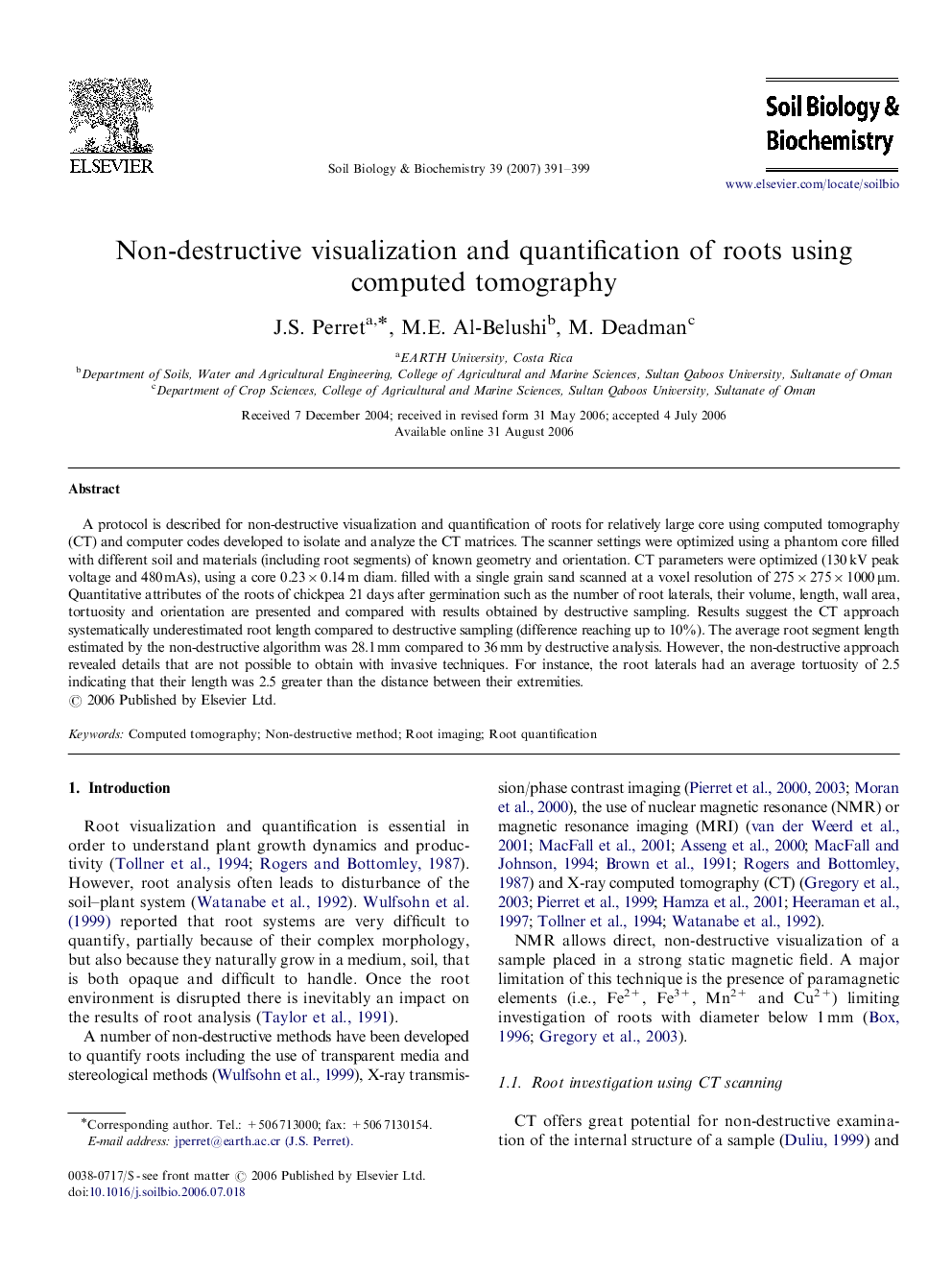| Article ID | Journal | Published Year | Pages | File Type |
|---|---|---|---|---|
| 2026458 | Soil Biology and Biochemistry | 2007 | 9 Pages |
A protocol is described for non-destructive visualization and quantification of roots for relatively large core using computed tomography (CT) and computer codes developed to isolate and analyze the CT matrices. The scanner settings were optimized using a phantom core filled with different soil and materials (including root segments) of known geometry and orientation. CT parameters were optimized (130 kV peak voltage and 480 mAs), using a core 0.23×0.14 m diam. filled with a single grain sand scanned at a voxel resolution of 275×275×1000 μm. Quantitative attributes of the roots of chickpea 21 days after germination such as the number of root laterals, their volume, length, wall area, tortuosity and orientation are presented and compared with results obtained by destructive sampling. Results suggest the CT approach systematically underestimated root length compared to destructive sampling (difference reaching up to 10%). The average root segment length estimated by the non-destructive algorithm was 28.1 mm compared to 36 mm by destructive analysis. However, the non-destructive approach revealed details that are not possible to obtain with invasive techniques. For instance, the root laterals had an average tortuosity of 2.5 indicating that their length was 2.5 greater than the distance between their extremities.
